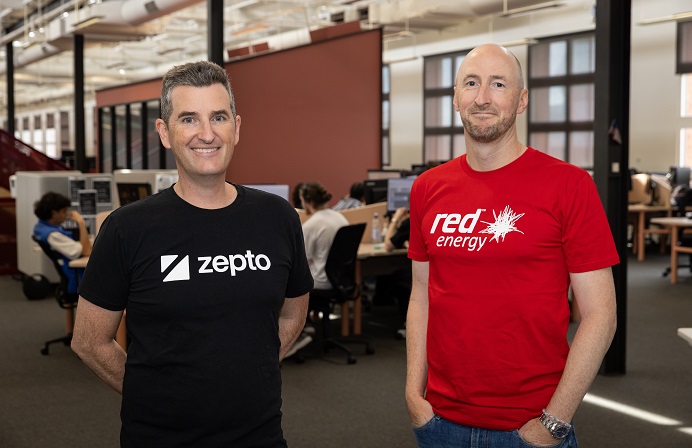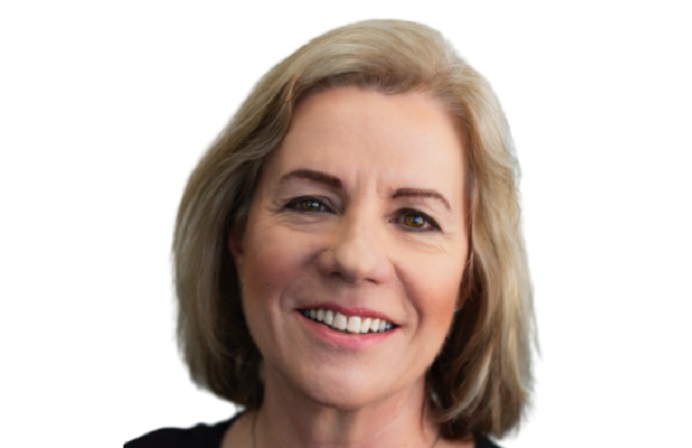
Insurers and the technology they use have evolved markedly in recent years, as lofty, blue-sky visions are quickly adopted as everyday, user-friendly tools – from sensors that track the health of a policyholder, satellites that track the fallout of a natural disaster, to claims processed without the need for a single human overseer. Yet, for those dealing with the seemingly neverending spate of natural calamities (and the policyholders they ultimately affect), throwing money and resources at the latest digital fad can, at times, seem cavalier.
We recently sat down with Lokesh Thondavada, an industry veteran of two decades (currently a senior leader at global risk and insurance brokerage giant Marsh), and a budding philosophical inquirer, author and podcaster, to understand how insurers can better manage the precarious balance of risk, resourcing, and the pressure to be a relentlessly innovative tech business.
Ahead of his keynote presentation at this month’s Future of Insurance 2024 conference, Thondavada shared his views on how the industry is adapting to change, navigating risks, and ideally leveraging digital innovation to meet the evolving needs of customers and staff.
FST Media: The insurance industry, despite being rooted in more than 400 years of tradition, is under constant pressure to adapt to emerging trends and challenges. How can insurers actively embrace and shape this transformation to their benefit?
Thondavada: This is a question we ask ourselves every single day. Firstly, we need to revisit and understand the company’s vision and purpose. Based on this, the organisations can start aligning their risk strategies to their vision. Most of the time we do see things in silos and it’s not aligned, which is often why it feels so disconnected.
Put simply, a company must first look into their vision and their purpose: why they exist, what they’re trying to do, and how they’re trying to do it. Once we answer the why, the what, and the how, any attempted transformation ultimately becomes relevant to customers and to employees.
FST Media: The pace of innovation today can seem relentless. Is this necessarily a positive for the insurance sector?
Thondavada: It’s all about mindset. I would say, yes, it’s a positive – humanity has always been evolving, and technology is no different. Whether we like it or not, we are going to adapt.
When the smartphone came up, we as individuals didn’t really resist; 80 to 90 per cent of us have a smartphone now. In work, our response to change may be a little bit different, which is why people see this as a challenge. But eventually, we will adapt.
Having that mindset of ‘Let’s adapt and be open’, all those hurdles suddenly disappear. Covid, I feel, really helped a lot of organisations embrace technology. The majority are now seeing how technology can help them, particularly with all those repetitive tasks humans are wasting their time on.
Short answer, I’d say we’re heading in the right direction.
FST Media: Too many businesses adopt technologies simply for the sake of not being left behind. It’s hard to imagine this is sustainable.
Thondavada: I agree. It seems like some organisations are trying to boil the ocean and have a real fear of missing out – that dreaded ‘FOMO’.
And that’s where I feel some are having bad experiences with technology. Once again, it goes back to our need not only to understand our customers, but also our employees. Once we understand our people, then it makes more sense to implement the technologies we need. There were, for instance, a lot of companies in the early 2000s that went on to implement a range of technologies that their customers felt added little value.
A decade later these companies realised, ‘Oh, it’s really not helping the clients or customers and is actually making their life more difficult’. With those learnings, we need to start looking into why we’re doing what we’re doing.
FST Media: Walk us through the current state of the insurance sector. What are some of the big challenges facing insurers today?
Thondavada: For me, there are two main challenges. The first is the increase in natural catastrophes – these are beyond our control, but we still need to look after our clients. We’re trying our best to find solutions, and not in a traditional way, to protect assets which are exposed to natural catastrophes and climate-related risks, and that’s been ongoing. However, over the last 12 to 24 months, one of the major concerns I see is artificial intelligence and data technology; that’s where there’s an evolving risk. A decade ago it used to be directors and officers, and then it used to be cyber. And now it’s artificial intelligence and Chat GPT.
We’re all learning and we’re all gathering information. Based on some of the data we have from the US and Europe, there’s a lot of focus on AI in insurance. Over this 12-to-24-month time horizon, I feel we’ll get to understand AI a little bit better, especially when we start to see the losses.
We see there are positives, but when it comes to the risk aspect of AI, the bottom line here is that insurance companies cannot provide cover if they don’t know the risk – there are a lot of unknowns in that area.
FST Media: Given that, what are some projects you’ve seen that are seeking to solve some of these challenges?
Thondavada: For natural catastrophes, for instance earthquakes, floods, storms, all this stuff, if you can’t get traditional insurance, there are other emerging solutions like parametric insurance. There are a lot of technology-based companies, both in New Zealand and Australia, where, with a different level of premium or coverage, technology is being used to provide coverage.
For instance, let’s say there’s an earthquake. A policy triggers when the earthquake goes above, say, a six richer scale, and straight away the client gets paid. What I’ve started to see in the last 12 to 24 months is that technology is being driven in these areas to make it happen in a non-traditional way. Straight away, using technology, you can monitor what’s happening and, based on that, the client gets an outcome.
We have other things in play concerning cyber. We’re currently working on cyber incident management, which, again, protects the client and takes them through clear steps to protect themselves and instructs them on what they should be aware of – for instance, when something happens, what should your business do in the first 24 to 48 hours? A big part of our cyber focus is on helping and guiding organisations.
FST Media: How should organisations focus their risk mitigation strategies?
Thondavada: There’s really no one-size-fits-all solution for every organisation. First of all, it depends on the industry sector and the revenue. There are big companies with dedicated enterprise risk management teams that look after all risk-related matters. Then you have mid-market and small-to-medium enterprises, who might not have that level of support, that level of understanding, or that level of expertise.
What I would suggest is that, depending on the industry sector and a company’s size and scale, it’s always good to engage an adviser who can help you. In the long run, those advisors will give you more stability and sustainability. Today, organisations are faced with a barrage of regulation and compliance. When you engage a professional risk adviser, they can look into all aspects of risk – people risks, non-people risks, insured risks, not insured risks, etcetera. So, yes, it really does depend on the size and scale as well as the industry sector.
Rather than trying to boil the ocean themselves, it’s better to take little time to at least speak to an adviser who can offer a path forward.
FST Media: Are there any risks that you see as specific to the Australian or NZ insurance industries?
Thondavada: The good news for us is we don’t need to implement anything from scratch. We always learn from the US, UK and Europe and, based on that, we’ll have a streamlined approach to what’s relevant here. For us, one of the biggest challenges Australia and New Zealand have is that we’re natural catastrophe-prone countries (and above the 26 parallel, it’s considered a ‘catastrophe zone’); it’s a conversation we have at every level. There is a political angle to it, an insurance angle, an industry sector angle and an organisational angle. It’s been a hot topic for as long as I can remember – so at least the last 20 years.
There are a lot of pieces that need to come together. People are coming up with alternative risk solutions, meaning they might not be available in traditional insurance or protection schemes, but we might come up with a solution to fit the business needs.
The other thing is data security and cyber. I frequently check the ACCC’s Scamwatch website – at least every two or three months. It’s both fascinating and horrifying to see that Australians are losing in the hundreds of millions of dollars, sometimes running into the billions, to scams. There are a panoply of different scam types out there and our role here is to provide awareness based on what we are seeing with our clients in that industry and sector.
That’s the role I take personally, which is to educate. But before we educate, I need to learn, I need to be curious, and I need to know what’s happening both globally and locally.
FST Media: There is no shortage of people who, despite the rhetoric otherwise, still see regulation as an obstacle. How can turn this perceived obstacle into opportunity, especially when it comes to things the great unknown of artificial intelligence?
Thondavada: It all depends on how we approach it. If we approach it thinking it’s a hindrance of course it’s going to be a hindrance. In the end, this regulation is in place to protect customers and clients – and without customers and clients, we don’t exist. We need to find ways to simplify things. We need to find ways to communicate whatever regulatory and compliance needs are internally so that we’re not just ticking the box, but we’re actually understanding why this is being implemented and what our is role in it.
I’ve seen a lot happening in the last 12 to 18 months and the majority of companies are trying their best to understand, to comply and to make sure that the customers and clients are getting the best service, best advice, and best value for every dollar they’re paying.
FST Media: Customer-centric design and servicing remain foremost priorities in insurance, as it is in the rest of the financial services sector. What are some hurdles to delivering a better customer experience, particularly in the ever-sensitive claims management process?
Thondavada: Customer experience and client centricity should be at the heart of all decision-making. It’s so challenging to achieve a high level of customer experience, especially in this day and age, even with all the digital tools at our disposal, like instant digital communications.
The biggest challenge for me is that, for the first time in human history, we have to deal with five generations.
In the past, it used to be a maximum of three, and each generation had their own way of communicating, their own way of learning, and their own way of responding. For example, if I want to communicate with my grandmother, I have to see her in person and I have to talk into her ear very slowly. When I communicate with my father or mother, they’re comfortable on the phone. With my daughter, she prefers to communicate on social media. With my own age group, it’s a mix of things – if I am doing certain things, I can send a text or send an email.
My point is, different age groups prefer different communication mediums, and the industry is trying its best through omnichannel service. But it’s taking a long time because you need to fully understand these different demographics, and from there you need to implement or support different technologies to meet their demands. Sometimes you’ve got to go in person and communicate depending on the information and sensitivities. Other times you don’t need to waste anyone’s time, you can just simply send a notification. By adapting to this, customer experience ratings will increase significantly.
Each year we complete a customer experience report worldwide. Normally tech companies and airlines rate on top, with retailers sitting above finance and insurance. However, over the last two years, some insurance companies have snuck into the top 20, which I think is fantastic. The difference I see with these companies is that they’re using good technology with a good mix of personalisation. That’s something I think every organisation can bring to life.
Insurance, after all, is not sexy at all; no one wants to talk about it.
Therefore, understanding the customer is key; we need to speak the customer’s language and for business, their industry sector language. We need to understand, say, retail jargon and connect with that language. That’s where it starts to make sense and this is where we’re investing a lot of time.
FST Media: As more organisations embrace new CX innovations and a branchless, digitised way of interaction, could you take us through some of the key methods used to measure the success of these programs and transformations?
Thondavada: There’s something called the Customer Experience Maturity Index. It places companies into four categories. The top category is ‘customer-obsessed’, rating at or upwards of eight out of 10. From there, it runs from ‘really good’, ‘aware’, all the way to ‘unaware’.
It’s all about streamlining the receipt and actioning feedback. A lot of times people ask for feedback and they don’t do anything with it.
Companies that are ‘customer-obsessed’ are the ones that receive feedback at every opportunity without taking too much time from the client.
Good customer success companies do eight to 12 feedback rounds in a year.
The companies that are just in that ‘aware’ situation do it, say, once or twice a year. And a lot of times, in that once or twice, they don’t even follow up!
FST Media: AFCA received over ten thousand complaints in the last year, many relating to claims and the use of technology in the claims process. Organisations appear to be getting in their own way by not addressing customer feedback and not understanding what people are actually upset about.
Thondavada: There’s a reason for that. Resourcing has been a massive issue for the industry. Claims people work the hardest, and to work in claims you need to have empathy. Every day you’re dealing with someone’s loss. And since we’re in a country faced with catastrophe after catastrophe, each catastrophe takes a whole year to deal with.
Resourcing has been an issue over the last five to 10 years, and Covid certainly didn’t help.
There has also been an impact on claims people’s mental health – an effective snowball effect and the reason why compliance has increased. I think the industry, overall, is aware of it, particularly the major insurers, and they’re trying to bring technology to address certain things where you don’t need human interaction. That’s why you’re seeing an increase in certain straightforward, simple claims processes where you don’t need human interaction. A customer can just get X, Y, and Z and get paid in 24 hours.
The industry is getting back, though. I’ve seen in the last six to 12 months that people are starting to see more light.
FST Media: What do you see changing most within the insurance industry over the next year or so?
Thondavada: Artificial intelligence is evolving right now and everyone’s watching that space. Some have taken the step of implementing AI into certain processes. For example, I know of certain insurers collaborating directly with tech companies to identify fraud or to identify sensitivities, based on the communication and the language used.
There are use cases for identifying sensitivity, complexity, fraud, as well as speech recognition, with different ways to implement AI in different parts and stages of the insurance lifecycle. How fast they’ll come into our day-to-day jobs, I don’t know. It’s a space that’s moving pretty fast, and I would expect in the next 12 to 24 months we will realise more and more how AI can help us.
FST Media: You’ll be a keynote presenter at our upcoming Future of Insurance event this month, covering the ever-expanding area of insurance risk. What do you hope to learn and share with your peers?
Thondavada: I’m really looking forward to sharing a perspective on how to navigate different types of risks in this ever-changing landscape. As well, I’ll look into M&A risk and how the deal lifecycle plays out.
From my peers, I’m really looking forward to learning about customer experience, technology transformations, and their journeys over the last 12 to 24 months. I’d like to see some success stories, and challenges they’ve overcome and where I can relate in my own role and perhaps share this with my colleagues and clients.
When it comes to technology, we’re all sharing a similar journey but on different levels. There’s always something to learn and without learning and curiosity, I wouldn’t exist.
Lokesh Thondavada will be a featured keynote presenter at the Future of Insurance 2024 conference, helping insurers navigate today’s risk management hurdles “to enhance stakeholder trust… and achieve sustainable, profitable growth”.





